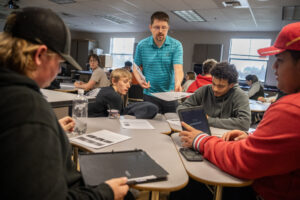For Washougal middle-school athletes living through the COVID-19 crisis, “distance running” has a whole new meaning.
After the initial statewide school shutdown due to the coronavirus in mid-March, Jemtegaard Middle School track and field coach Tracey Stinchfield devised an online workout plan for her athletes to stay in shape for when their season started later in the spring.
But shortly after Washington Governor Jay Inslee closed schools for the remainder of the 2019-20 school year, the Washington Interscholastic Activities Association announced that all extracurricular athletics and activities scheduled for this spring were to be cancelled.
At that point, Stinchfield turned her plan into a full-fledged “virtual season.”
She created a website (washougalrunners.com), which features weekly workout plans for the runners, who can record their results via a comment form.
Stinchfield hopes that her virtual training program can provide her athletes with “something to do and something to look forward to,” and a way to reduce stress and anxiety.





